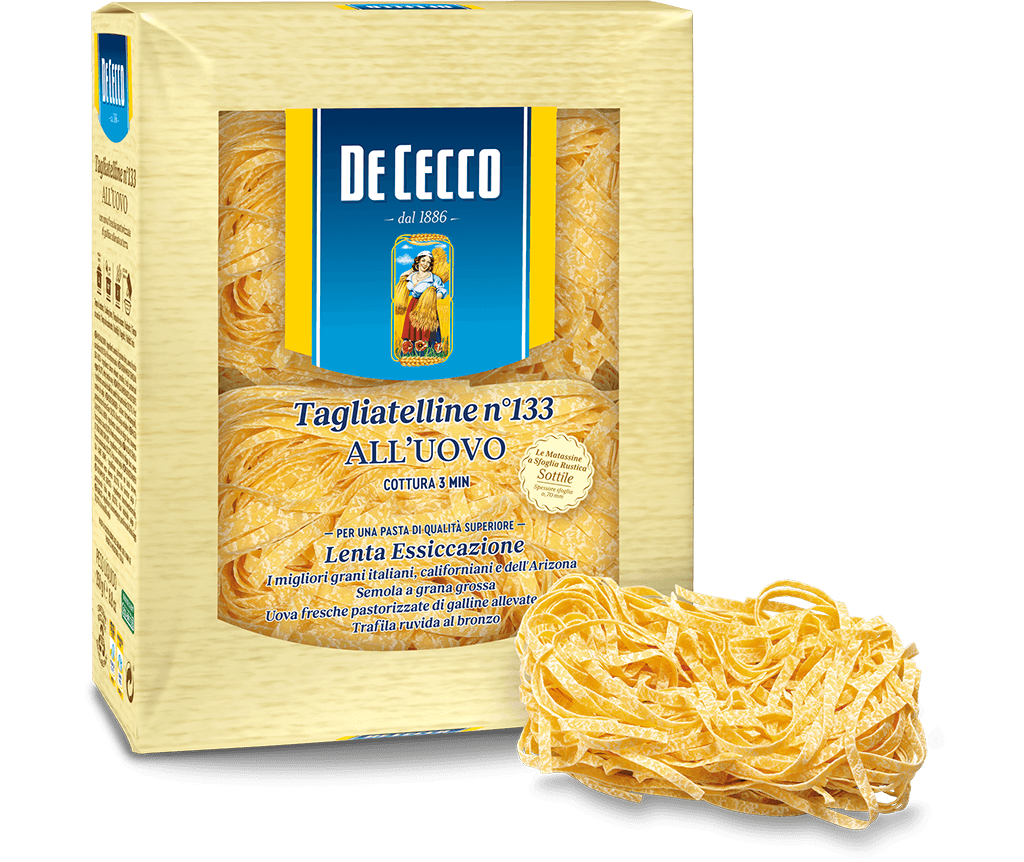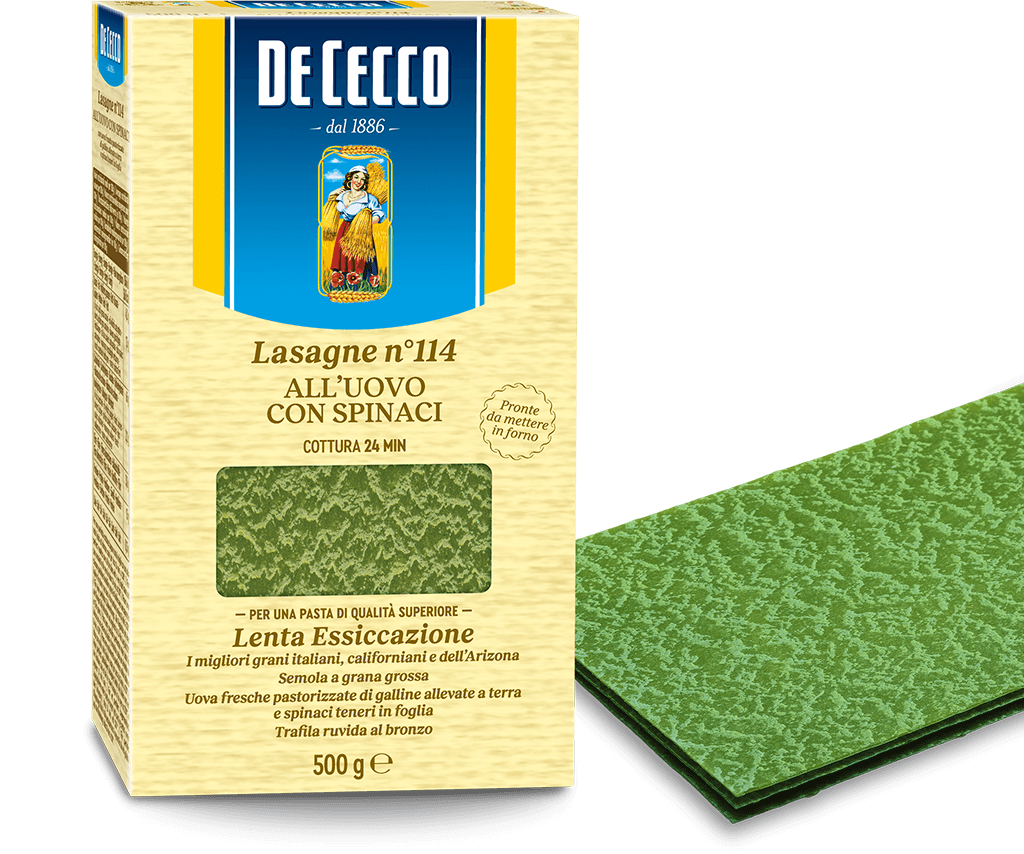Lasagne n° 114 all'uovo con spinaci
- Cooking time: 24 min
Our method
Attention, care, experience, quality at every stage: from our mill to your table.
Tagliatelline n° 133 all'uovo
Tagliatelline, which originate from Liguria, are consumed all over Italy and are part of the long, flat pasta family.
You need to go a long way back to retrace the origins of Tagliatelline and beyond the confines of Italy. Tagliatelline were known as early as 700 BC in Japan where they were imported from China with many other cultural and religious elements. In Japan, they were called Udon, tagliatelline made from common wheat, and seem to have met with incredible success in the province of Osaka and in the southern part of the country in general.
Tagliatelline are just the right size to be served both with sauces and in broth. In the first case, the recommended condiments are those from Ligurian tradition, so with pesto as the undisputed winner, and fish and shellfish based sauces coming a close second. They are also excellent in vegetable or meat broths or, with a nod to Oriental traditions, in broths based on seaweed and mushrooms.
Available in 250g packs






